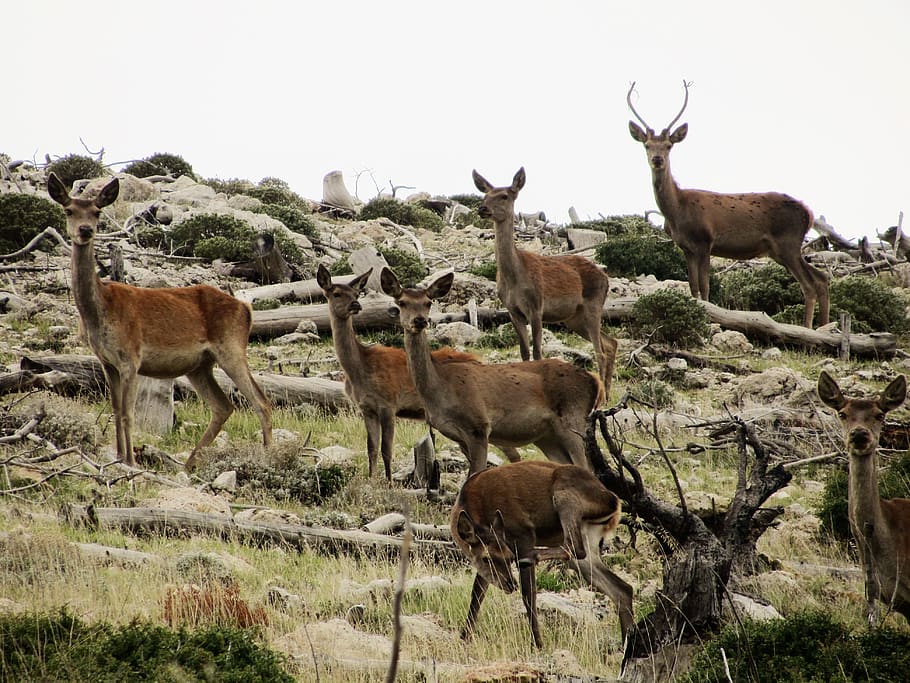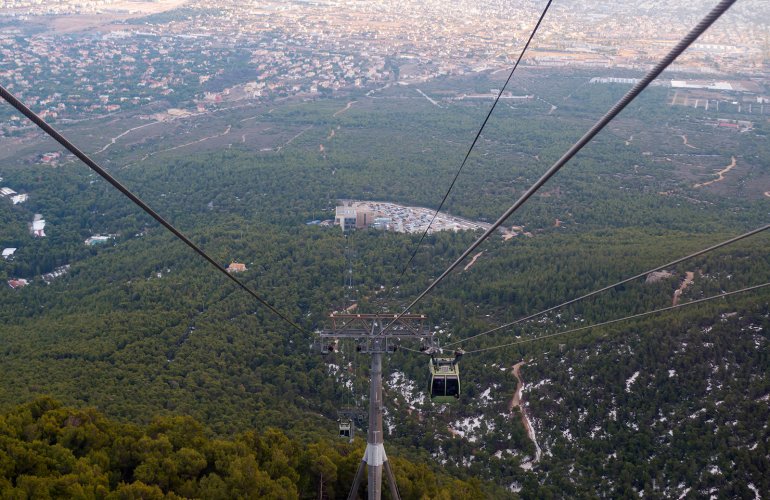
Parnitha National Park is located in the northern part of the Parnitha mountain range, which is situated near Athens, the capital city of Greece. It’s approximately 30 kilometers (about 19 miles) from the city center of Athens. The park covers an area of about 300 square kilometers (about 116 square miles).
The vegetation in Parnitha is the result of the interaction of many factors and mainly the flora, the general climate, the orographic formation, the petrological and geological composition, the soil, but also the human influence, which appears in the historical development and economic structure of the region. The vegetation changes as the altitude varies.
In Parnitha there are three vegetation zones:
The vegetation of Parnitha was severely damaged during the fire that broke out in the Forest on June 28, 2008. According to data from the Parnitha Forest Service, a total of 21,800 acres of Kefalonian spruce forest were burned, 10,561.98 acres of 3.0.2 acres of pine trees.




Parnitha with its significant area, its rich flora, its varied terrain and the high protection it enjoys as a National Park, Game Sanctuary, Special Protection Area for birds (SPA) and area of the Natura 2000 Network, offers very good conditions for wildlife development. Thus, the fauna of Parnitha remains among the richest in Attica and despite adversity and human interventions maintains the largest number of red deer (Cervus elaphus) in Greece.
According to the Hellenic Ornithological Society (E.O.E.) and Assistant Professor A. Legaki (Department of Biology, EKPA), there are 158 species of birds in Parnitha, of which 28 are included in Directive 79 / 409 Annex I, 102 species are included in the Berne Convention Annex II, 58 species in the Bonn Convention and 18 species in the Greek Red Book. There are also 39 species of mammals, 25 of which are included in the Red Book and 32 in the Berne Convention. Finally, 29 species of reptiles and amphibians have been recorded, of which 24 species are included in the Berne Treaty and 4 species in Directive 92/43.
17 of the 39 mammals found in Parnitha are bats, which are included in the Treaty of Bern and in the Greek Red Book. The geomorphology of the area (holes, caves) offers shelter to bats. Also, old tree clusters, especially those found in wet areas, are favorable places for bat species that live in tree hollows. The population status of bats can and should be studied in Greece and especially in Parnitha where several endangered species are found.
Parnitha mountain has a warm-summer Mediterranean climate (Csb) with frequent snowfalls in winter and pleasant temperatures in summer. The mountain is significantly wetter than areas of east and southern Attica. The mountain was also affected by several major blizzards, including two in 2005 and 2006, stranding cars and closing roads, as well as the cable car.

Aside from its natural beauty, Parnitha National Park also holds cultural and historical importance. It’s home to several ancient sites, including ruins of fortresses, monasteries, and caves that date back to different historical periods.
Parnitha has several places of archaeological interest. In antiquity, several fortresses had been built on the mountain, for the defense of the peninsula of Attica and more specifically Classical Athens against the Boeotians and others enemies from the north. Today some fortresses are kept in good condition such as the Phyle fortress, at a height of 687 meters in the west of Parnitha. Other notable fortresses are the Panakton, in the area of Dervenochoria and Eleutherae fortress near Mount Cithaeron. Dekeleia was also an important fortress on the site of modern-day former royal palace in Tatoi, and the fort of Limiko was situated deep inside the mountain, just north of its peak.
A notable monument of later periods is the Monastery of Kleiston. It is a Byzantine monastery dated from 13th century. It is mentioned by Pope Innocent IV in 1209 with the name Monastery of Kyras. Southeast of Parnitha, in a dense forest, is Tatoi Palace. It was the palace of the Greek royal family and it was built in 19th century. Today it is abandoned.
Parnitha has also natural monuments. The cave of Panas is on the west slopes of the mountain at a height of 750 meters. It was a worship site in antiquity. Near the cave there is the steep gorge of Gouras and the gorge of Keladonas river. A beautiful site of the mountain is Beletsi Lake, on the east slopes of the mountain, near Afidnes, and it is important place for migratory birds. In general, the national park is known as the “lungs of Athens”.
Activities: The park attracts outdoor enthusiasts who enjoy activities such as hiking, mountain biking, rock climbing, and birdwatching. During the winter months, it’s also a popular destination for skiing and snowboarding.
There are visitor centers, information kiosks, and designated picnic areas within the park to cater to the needs of visitors. Additionally, there are mountain shelters and refuges for those interested in overnight stays.
Modern Facilities: A casino, the Mont Parnes Casino, is located near the top of the mountain and is served by a suspended cable car. Two shelters are also on Parnitha, the most known of which is Mpafi. A series of trails are found around the mountain as well as forest roads, and also on the mountain is Athens’ second transmitter, broadcasting radio and television since the mid-1950s, across the range of television channels from ERT, ANT1, Mega, Alter and more, to satellite, including Super Sport, Seven X and Filmnet, and a multitude of radio including ERA Radio, Klik FM, ANT1 Radio, Ciao FM, Rhythmos, Super Sport FM, Top FM and others. The supporting road connection was paved in the mid-20th century.

This side was created by the students: Natasza Szczygieł, Weronika Szczecińska, Julia Andrzejewska, Kinga Balińska, Magda Kurek from 2LO ZEROMSKI in Sieradz.